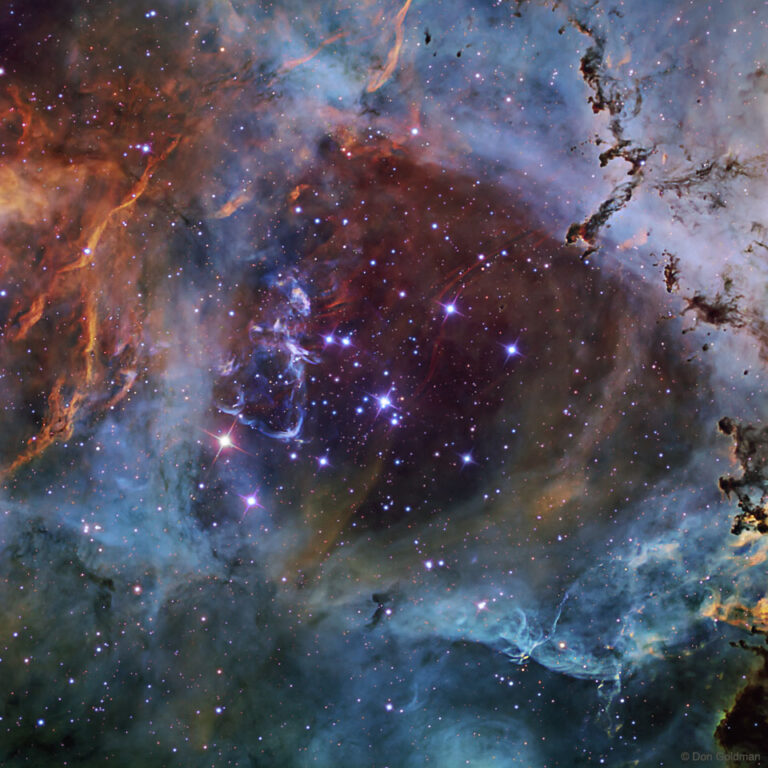玫瑰星云的深场影像
一个繁忙的恒星场显示了几个大的红色星云。玫瑰星云就在其中,在右下方可以看到,而圆锥形星云周围的星云更大,在左上方可以看到。有关更多详细信息,请参阅说明。

一个繁忙的恒星场显示了几个大的红色星云。玫瑰星云就在其中,在右下方可以看到,而圆锥形星云周围的星云更大,在左上方可以看到。有关更多详细信息,请参阅说明。

2024年2月9日 When Roses Aren’t Red Image Credit & Copyright: Tommy Lease (Denver Astronomical Society) Explanation: Not all roses are red of course, but they can still be very pretty. Likewise, the beautiful Rosette Nebula and other star forming regions are often shown in astronomical images with a predominately red hue, in part because the dominant emission in the nebula is from hydrogen atoms. Hydrogen’s strongest optical emission line, known as H-alpha, is in the red region of the spectrum. But the beauty of an emission nebula need not be appreciated in red light alone. Other atoms in the nebula are also excited by energetic starlight and produce narrow emission lines as well. In this close-up view of the Rosette Nebula, narrowband images are mapped into…

2023年2月6日 In the Heart of the Rosette Nebula Image Credit & Copyright: Lyman Insley Explanation: In the heart of the Rosette Nebula lies a bright cluster of stars that lights up the nebula. The stars of NGC 2244 formed from the surrounding gas only a few million years ago. The featured image taken in mid-January using multiple exposures and very specific colors of Sulfur (shaded red), Hydrogen (green), and Oxygen (blue), captures the central region in tremendous detail. A hot wind of particles streams away from the cluster stars and contributes to an already complex menagerie of gas and dust filaments while slowly evacuating the cluster center. The Rosette Nebula’s center measures about 50 light-years across, lies about 5,200 light-years away, and is visible with…

2021年02月21日 NGC 2244: A Star Cluster in the Rosette Nebula Image Credit & Copyright: Don Goldman Explanation: In the heart of the Rosette Nebula lies a bright open cluster of stars that lights up the nebula. The stars of NGC 2244 formed from the surrounding gas only a few million years ago. The featured image taken in January using multiple exposures and very specific colors of Sulfur (shaded red), Hydrogen (green), and Oxygen (blue), captures the central region in tremendous detail. A hot wind of particles streams away from the cluster stars and contributes to an already complex menagerie of gas and dust filaments while slowly evacuating the cluster center. The Rosette Nebula’s center measures about 50 light-years across, lies about 5,200 light-years away, and…